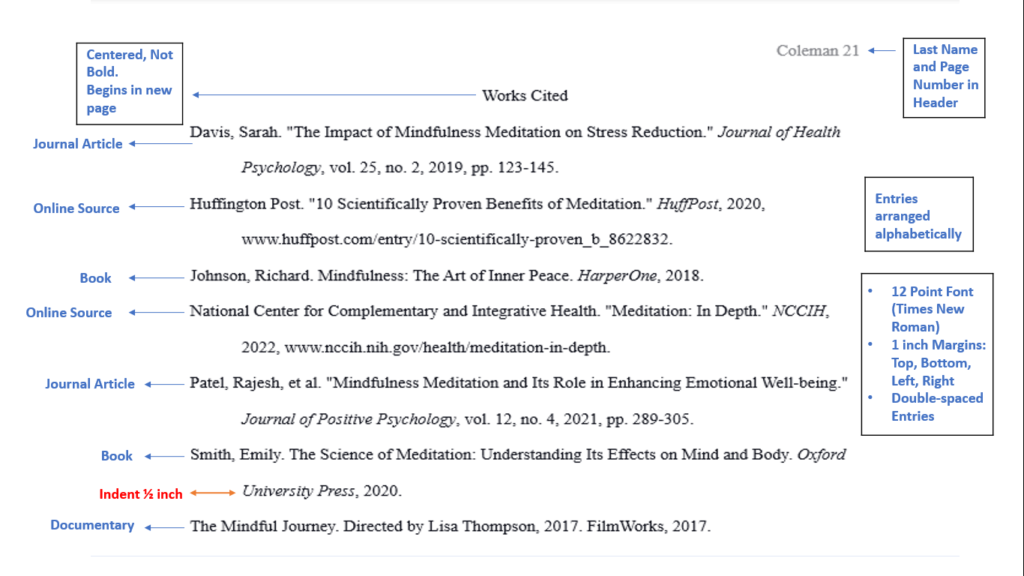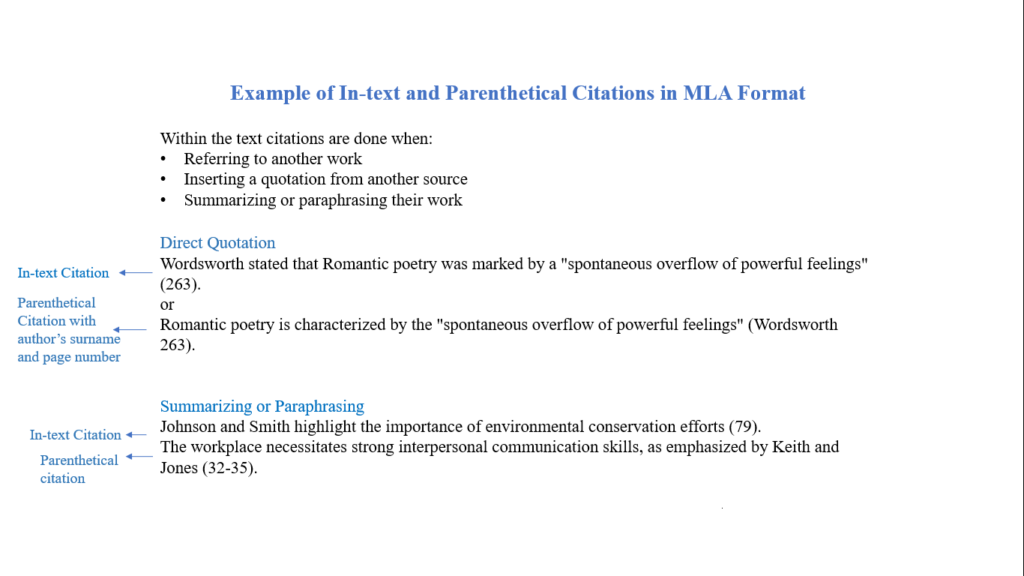Navigating MLA Format Citation Styles: A Roadmap to Accurate Citations
In the world of academia and research, accurate citation is a fundamental skill that distinguishes scholarly work from mere opinion. The Modern Language Association (MLA) format is one of the most widely used citation styles, providing a standardized method for citing sources and ensuring proper attribution. This comprehensive guide will delve into the intricacies of MLA citation, specifically focusing on in-text citations and the Works Cited page. By the end, you will possess the knowledge and confidence to navigate these elements flawlessly. For further assistance with your assignment, give us a nudge by stating “Write a paper for me” and our expert writers will take on the task for you.

Understanding In-Text and Parenthetical Citations
In-text Citations in MLA
In-text citations in MLA style are used to acknowledge and provide brief information about the sources you have used within the body of your paper. These citations typically include the author’s last name and the page number(s) from which the information is taken. Here’s how to format in-text citations in MLA:
For a direct quotation:
Place the author’s last name and the page number(s) in parentheses immediately after the quotation. If the author’s name is mentioned in the sentence, only include the page number(s) in parentheses. Here’s an example:
“The future belongs to those who believe in the beauty of their dreams” (Smith 45).
According to Smith, “The future belongs to those who believe in the beauty of their dreams” (45).
For a paraphrase or summary:
Place the author’s last name and the page number(s) in parentheses after the paraphrased or summarized information. If the author’s name is mentioned in the sentence, only include the page number(s) in parentheses. Here’s an example:
Climate change is a global crisis that requires immediate attention (Johnson 25-27).
Johnson argues that climate change is a global crisis that requires immediate attention (25-27).
For a source with no page numbers:
If the source you are citing does not have page numbers (e.g., a website), you can use other identifying information, such as the author’s last name or a shortened title. If there is no author, use a shortened version of the title instead. Here’s an example:
According to the National Wildlife Federation (“Climate Change Impacts”), rising temperatures have led to the loss of biodiversity.
For multiple authors:
If a source has two authors, include both authors’ last names in the same order as they appear on the source, separated by “and.” Here’s an example:
(Rogers and Smith 82)
For a source with three or more authors, include the first author’s last name followed by “et al.” (which means “and others”). Here’s an example:
(Brown et al. 117)
Remember to place the in-text citation immediately after the borrowed information while still making it clear which source is being referenced. Also, make sure to include the corresponding full citation on your Works Cited page for each source cited in the body of your paper.
Parenthetical citations in MLA
Parenthetical citations in MLA are used to acknowledge and provide brief information about the sources you have used within the body of your paper. These citations typically include the author’s last name and the page number(s) from which the information is taken within parentheses at the end of the sentence. If the author’s name is mentioned within the sentence, you only need to provide the page number(s)Here’s how to format parenthetical citations in MLA:
For a direct quotation:
Include the author’s last name and the page number(s) in parentheses immediately after the quotation. Place the punctuation mark after the closing parenthesis. Here’s an example:
“The future belongs to those who believe in the beauty of their dreams” (Smith 45).
For a paraphrase or summary:
Include the author’s last name and the page number(s) in parentheses after the paraphrased or summarized information. Place the punctuation mark after the closing parenthesis. Here’s an example:
Climate change is a global crisis that requires immediate attention (Johnson 25-27).
For a source with no page numbers:
If the source you are citing does not have page numbers (e.g., a website), you can use other identifying information, such as the author’s last name or a shortened title. If there is no author, use a shortened version of the title instead. Here’s an example:
According to the National Wildlife Federation (“Climate Change Impacts” par. 4), rising temperatures have led to the loss of biodiversity.
For multiple authors:
If a source has two or three authors, include all their last names in the same order as they appear on the source. Use the word “and” between the last two names. Here’s an example:
(Rogers, Smith, and Johnson 82)
For a source with more than three authors:
If a source has more than three authors, use the first author’s last name followed by “et al.” (which means “and others”). Here’s an example:
(Brown et al. 117)

